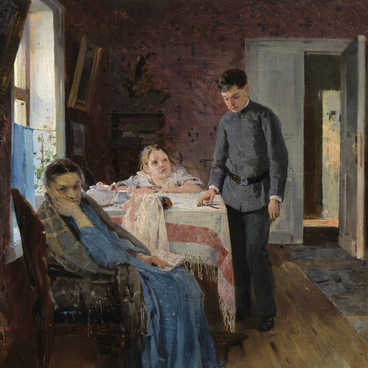Portrait of Tsaritsa Natalya Naryshkina
She is a tall woman in the prime of her life, with a pleasant face, large black eyes, a round mouth, and a high forehead. Her body is elegantly built, her voice is sonorous and pleasant, and her manners are exquisite.
Alexei Mikhailovich and Natalya Naryshkina lived together for only five years. During that time, Natalya Naryshkina introduced many new elements to the image of the Russian Tsaritsa. She was highly educated, well-read, and fluent in German. She attended all festive services in the cathedrals and rode in an open carriage in summer which made ordinary citizens feel confused. It was on her initiative that the first Russian theater was established.
It is believed that by moving away from the
traditional customs, Natalya Naryshkina laid the groundwork for the reforms of
her son, Peter the Great. She was upset that he spent a lot of time away from
home, especially on sea voyages. Natalya Naryshkina died of a heart disease at
the age of 42, on January 25, 1694. Legend has it that the original portrait
(this one is a copy) was painted by the artist of the Armory, Mikhail
Tchoglokov, immediately after the Tsaritsa’s death and was completed on
February 9.
Ministry of Culture of the Russian Federation


